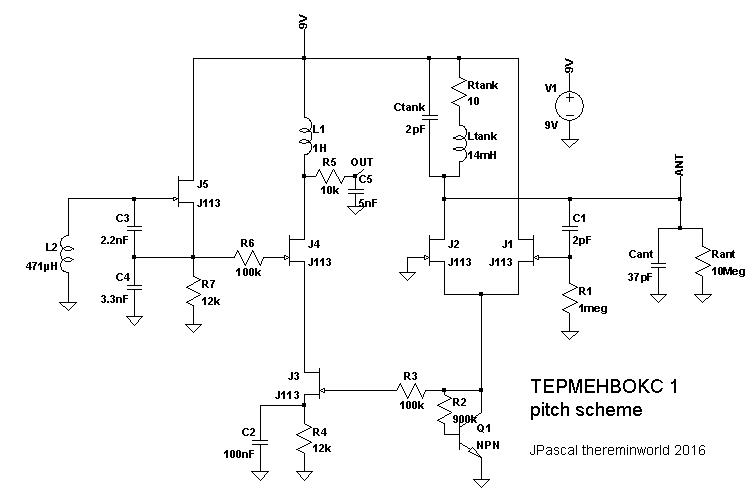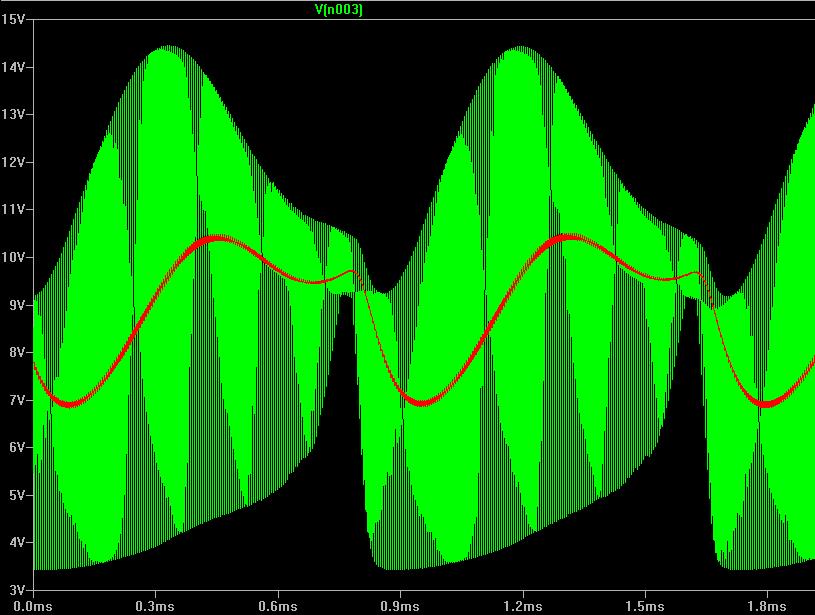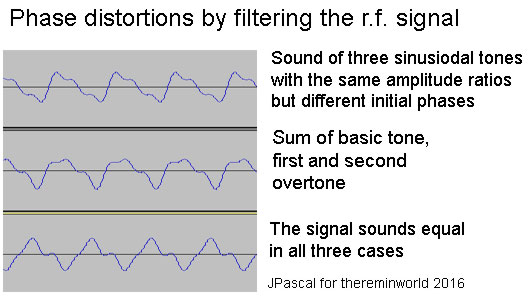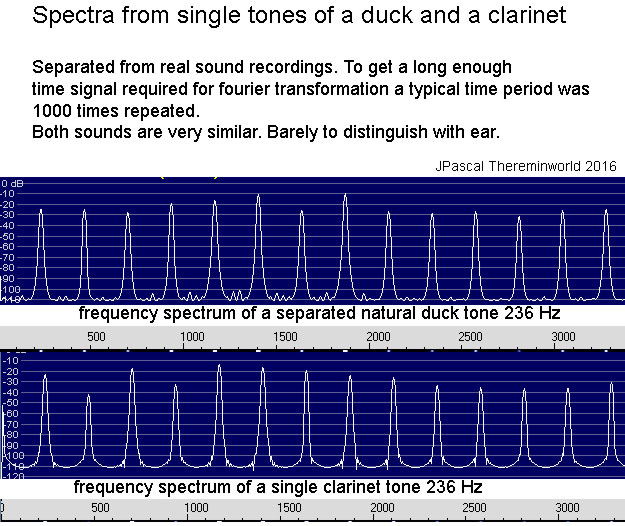"What is the best way to measure linearity of the pitch field? All of my theremins seemed to have a perfectly linear field using the closed hand open method right up to the antenna. Today I conclude a long skinny wire antenna is best in my application but then I am fatter and have a lot of capacitive surface in the back of the playing field. If this has affect there is no perfect linear pitch field that will work for everyone, we must settle for ideal." - Christopher
Do like I did: sit in a chair with a ruler affixed to the center of the antenna resting on your shoulder and measure the pitch with a frequency counter. A stop on the ruler can help you keep your body at a fixed distance while your hand / arm moves, and notches in the ruler can help you quickly place your hand (I used my thumb tip as an index, though this isn't perfect). Do three runs and if they all look close to each other average them together. Plot them in a spreadsheet and check C vs. 1/distance and it should look really damn linear if your data is any good.
This drove me to detailed capacitive simulation of the antenna / hand / arm / body / floor, where the results are cleaner and much more definitive IMO. A long skinny wire is the least sensitive but the most linear when heterodyning (where absolute sensitivity is less of an issue) though antenna geometry isn't as a huge linearity driver as one might think.
"My vacuum tube theremins would hold the same musical note, say 300 hz over a ten degree F room temperature change overnight. The coils were kept lower than the hot tubes. This revealed to me that 95% of modern thermal drift comes from the behavior of PN junction transistor character mismatch. Any coil issue would be counter balanced by the dual oscillator design of the theremin."
Without looking at your particular schematic, PN junction issues are possibly due to the way you are biasing and using the BJT in circuit. There are parasitic capacitances inside the transistor, the worst offender is between the base and the collector. If you use the transistor in an inverting gain configuration (input at the base, output at the collector) this capacitance gets magnified by the gain (this is the "Miller effect"). And coil drift only has a chance of cancelling if the oscillators are completely identical, which usually isn't the case.
I found it really instructive to read blogs and on-line papers and such where ham radio operators discuss the design of super stable LC local oscillators (i.e. for transmitting and receiving). The use of low tempco ferrite coil forms requires them to compensate with reverse tempco caps. IMO you're better off leaving out drifty components if possible rather than relying on drift balance or compensation. And always voltage regulate; it's trivial to do and has a massive impact on stability.
I know I sound crabby, but I'm really not trying to pick on anyone. It's just that some things need to be completely nailed down before you can even see the next level up. Linearity is one of those things everyone has to come to grips with sooner or later, but open / closed hand exercises (as valuable as they are) will only get you so far, and at some point are just a waste of time.





